によって hasmik 年月日 Aug 1, 2015


によって hasmik 年月日 Jul 31, 2015
日本のエチケット
Correct manners are very important among the Japanese. Also as a foreigner in Japan you should be familiar with at least the most basic rules: Inside the house How to behave in a Japanese home. Visiting shrines and temples How to behave at shrines and temples. Taking a bath How to take a bath in Japan. Japanese toilets How to use toilets in Japan. Table manners Basic rules of Japanese table manners. Chopsticks How to use Japanese chopsticks. Dining out How to dine at a restaurant in Japan. Sitting techniques How to sit properly in Japan. Greeting About...
によって hasmik 年月日 Jul 31, 2015
日本の工芸と芸術
Architecture About traditional and modern Japanese architecture. Bonsai About the art of cultivating miniature trees. Bunraku About traditional Japanese puppet theater. Calligraphy About the art of writing beautifully. Contemporary Art A list of sites to see contemporary art. Cormorant Fishing A traiditonal fishing method using cormorants. Dolls About various types of Japanese dolls. Gardens About Japanese gardens. Geisha About entertainers performing traditional Japanese arts. Ikebana About Japanese flower arrangement. Kabuki About traditional...
によって hasmik 年月日 Jul 30, 2015
日本の宗教
Shinto and Buddhism are Japan’s two major religions. Shinto is as old as the Japanese culture, while Buddhism was imported from the mainland in the 6th century. Since then, the two religions have been co-existing relatively harmoniously and have even complemented each other to a certain degree. Most Japanese consider themselves Buddhist, Shintoist or both. Religion does not play a big role in the everyday life of most Japanese people today. The average person typically follows the religious rituals at ceremonies like birth, weddings and funerals, may visit...
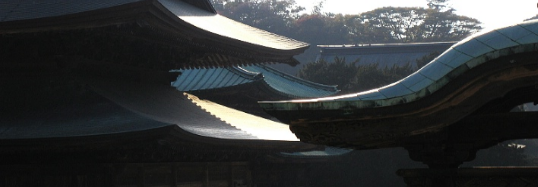
によって hasmik 年月日 Jul 6, 2015
日本の寺院
Temples are the places of worship in Japanese Buddhism. Virtually every Japanese municipality has at least one temple, while large cultural centers like Kyoto have several thousands.Temples store and display sacred Buddhist objects. Some temples used to be monasteries, and some still function as such. Structures typically found at Japanese temples are: Main hall The sacred objects of worship, such as statues, are displayed in the main hall. Main halls are called kondo, hondo, butsuden, amidado or hatto in Japanese. Example: Main hall...

によって hasmik 年月日 Jul 6, 2015
日本の神社
Shinto shrines are places of worship and the dwellings of the kami, the Shinto “gods”. Sacred objects of worship that represent the kami are stored in the innermost chamber of the shrine where they cannot be seen by anybody. People visit shrines in order to pay respect to the kami or to pray for good fortune. Shrines are also visited during special events such as New Year, setsubun, shichigosan and other festivals. New born babies are traditionally brought to a shrine a few weeks after birth, and many couples hold their wedding ceremonies there. The...

によって hasmik 年月日 Jul 5, 2015
日本の城
History of Castles Fortresses have been built in Japan since early times. A particular need for castles arouse in the 15th century after the central government’s authority had weakened and Japan had fallen into the chaotic era of warring states (sengoku jidai). During that era, Japan consisted of dozens of small independent states which fought each other and built small castles on top of mountains for defense purposes. When Oda Nobunaga reestablished a central authority over Japan in the second half of the 16th century, and his successor Toyotomi...

によって hasmik 年月日 Jul 4, 2015
10 Reasons Japanese Women Don’t Get Old ...
“A good, functional and healthy body is the ultimate fashion statement.” Kiyokazu Washida, fashion critic Recently I came upon a small, but informative book by Naomi Moriyama entitled, Japanese Women Don’t Get Old or Fat. Intrigued and a bit skeptical, although I follow a very similar style of diet, I found some delicious recipes to add to my daily repertoire of meals and gleaned some useful tidbits of information. Such as, for the past 25 years Japanese women have held the world record for living the longest, 86.4 years. Not just the women, Japanese men have the...
によって hasmik 年月日 Jun 28, 2015
日本の花
Seasons are a main theme in the Japanese culture. Flowers are like mirrors to the seasons, reflecting the passage of time. Fittingly, flower viewing is a very popular activity in Japan as most prominently seen in the annual festivities surrounding the cherry blossoms, but not limited to them.The following chart shows the approximate blooming periods for some of the most popular flowers in Japan. One point to note is that because Japan extends north to south for some 3500 kilometers, a particular flower species might blossom at differing times across regions with varying...


によって hasmik 年月日 May 2, 2015
日本のファッションとデザイン...
Japan has already had its significant role on the map of Fashion World. Japanese designers are shining on the best fashion stages of the planet. Accordingly, worldwide designers are also inspired in creating traditional Japanese costumes and accessories. For real stylish people, Tokyo, of course, is a city of dreams. In Tokyo there are the best boutiques of worldwide brands as well as the shops of the local designers. They suggest the most actual clothes, shoes and accessories here in Tokyo. The tourists pay much attention to young people in «Kawaii» style. It seems...
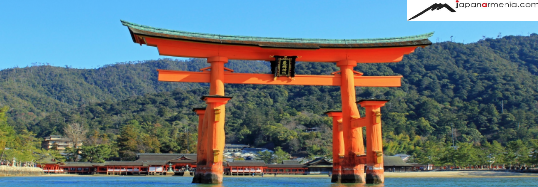
によって hasmik 年月日 Apr 25, 2015
日本の建築
Architecture in Japan, as well as a lot of things in this country, includes early ancient monuments and modern masterpieces. The all ancient maintained buildings of the world (VI century) are located in Japan. However, there are many contemporary constructions and architectural monuments here in Japan. The powerful stimulus of architecture, as well as the culture of Japan, is the results of Buddhism adoption. Up to the XIX century the main concentration in architecture was China, however, Japanese architects turned the foreign samples into the real Japanese...

によって hasmik 年月日 Apr 19, 2015
日本のガーデン
There is hardly another place in the world where the landscape art has been inspired as tenderly as it is in Japan. Even in early middle ages Japanese people paid special attention to the nature by creating wonderful gardens and parks. This is called landscape in European culture. These gardens were meaningful in Buddhist conceptions. The island was in the centre of the composition (rocks, pavilions) surrounded by lakes. It was considered to be the heaven symbol in the middle of the ocean. Famous Byodo-in temple located in Byodo-in Uji (nearby Kyoto) is a wonderful...
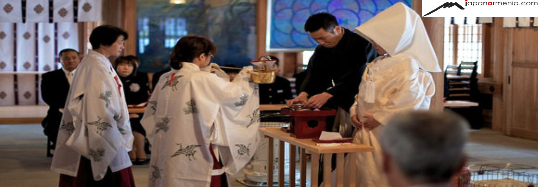
によって hasmik 年月日 Apr 19, 2015
奇妙な習慣
The traditions of all the nations have certain elements of absurdity. We, for example, drink for health. The Japanese in their turn have their own absurdities. 1.New Year During New Year celebration on the tables of the Japanese there is no dolma, no pork and there are no fireworks. They quietly go to bed, get up early in the morning and go together to meet the New Year sunrise. 2.Alwayssay “yes” The Japanese never say “no”. Every time, when it is necessary to refuse somebody, they choose a more respectful way of refusing or an agreement,...
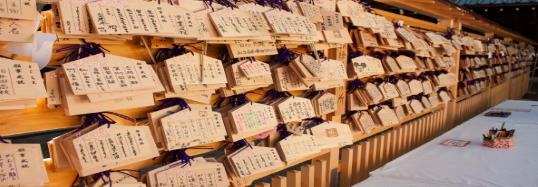
によって hasmik 年月日 Apr 18, 2015
日本人の名前
Japan is a unique country, which totally differs from the rest of the countries of the world. It has a unique cuisine, a living, which is characteristic of him. Even the customs of the Japanese differ from those of other nations. The names of the Japanese are also unique. The Japanese names have two components: a name (surname), which is passed from generation to generation and a name, which is given after birth. Usually, when introducing themselves they write their surname and then–name. However, nowadays, in the European style sometimes they write their name first and...
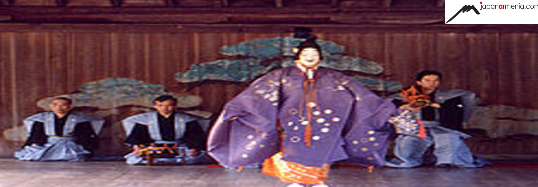
によって hasmik 年月日 Mar 29, 2015
日本の演劇能楽(ビデオ)
The borderline of the Japanese theater, which goes to extremes, begins with the tragic plays and ends with the performances of the colorful world of puppet, that have theatrical shading. The oldest one from the local theaters is the theater Noh. It has originated in the 14th century. It is a musical-dancing drama, which has originated with the help of men’s choir, pipe and two-three drums. Performances mainly consist of three plays, each of them lasts for thirty minutes. They are mainly dramatic shadings of phenomena concerning the Japanese, legends based on the...
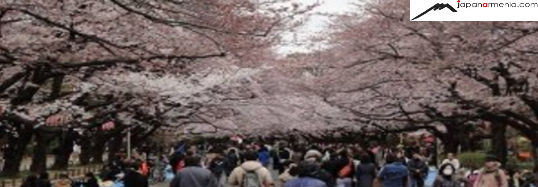
によって hasmik 年月日 Mar 29, 2015
花見(ビデオ)
The blossoming of sakura is the most important event in Japan, which symbolizes the coming of spring. In the beginning sakura–the flower of cherry, here had the idea of life being delicate and ephemeral: like sakura life is short and not stable. The Japanese appreciate this little performance staged by the nature, where the heroines are the cherry-trees crowned with flowers so much, that they treat this phenomenon as a national holiday and call it Hanami (O-Hanami). On these days all the parks, squares and Buddhist shrines are more crowded than ever. The opportunity to...
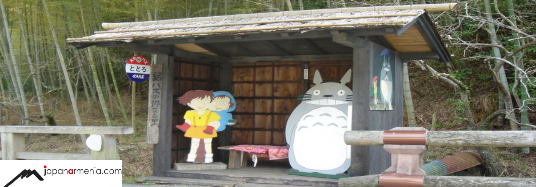
によって hasmik 年月日 Mar 15, 2015
アニメ
«Romance in pictures»-maybe this is the most typical translation of Japanese word «manga». This is form of descriptive art and literature. Manga readers are of different agd having different interests. Manga is a creation of the most different genres. Manga can be adventurous, romantic, sport, historical, humorous, scientific-fantastic, horror, erotic or so on. The word «manga» was used by famous Japanese painter Katsusiki Khakusaem in 1814. At that time his created book was description of white and black eskizes. He titled the book «Manga» (automatic eskizes)....
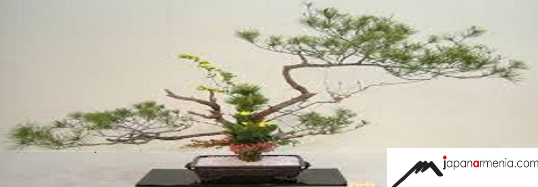
によって hasmik 年月日 Mar 13, 2015










